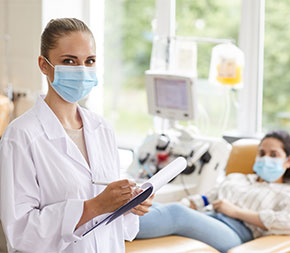Some Ideas on Northeast Medical Institute - New Haven Campus Phlebotomy Course & Cna Class You Should Know
Some Ideas on Northeast Medical Institute - New Haven Campus Phlebotomy Course & Cna Class You Should Know
Blog Article
Northeast Medical Institute - New Haven Campus Phlebotomy Course & Cna Class - An Overview
Table of ContentsNot known Details About Northeast Medical Institute - New Haven Campus Phlebotomy Course & Cna Class Not known Factual Statements About Northeast Medical Institute - New Haven Campus Phlebotomy Course & Cna Class Getting The Northeast Medical Institute - New Haven Campus Phlebotomy Course & Cna Class To WorkNot known Factual Statements About Northeast Medical Institute - New Haven Campus Phlebotomy Course & Cna Class Our Northeast Medical Institute - New Haven Campus Phlebotomy Course & Cna Class IdeasNortheast Medical Institute - New Haven Campus Phlebotomy Course & Cna Class for Beginners
The usage of such devices need to be gone along with by various other infection prevention and control practices, and training in their usage.For settings with reduced sources, cost is a motoring consider procurement of safety-engineered tools - PCT Training. Where safety-engineered tools are not offered, proficient use of a needle and syringe is acceptable. Accidental direct exposure and certain information concerning a case must be taped in a register. Support solutions ought to be advertised for those who undertake unexpected direct exposure.
In the blood-sampling space for an outpatient division or clinic, supply a comfortable reclining couch with an arm remainder.
The Buzz on Northeast Medical Institute - New Haven Campus Phlebotomy Course & Cna Class
Guarantee that the indications for blood tasting are clearly specified, either in a written method or in documented guidelines (e.g. in a lab kind). Whatsoever times, follow the approaches for infection prevention and control listed in Table 2.2. Infection avoidance and control techniques. Collect all the devices required for the treatment and area it within risk-free and very easy reach on a tray or trolley, guaranteeing that all the items are plainly noticeable.
Where the client is grown-up and mindful, follow the steps laid out listed below. Introduce yourself to the client, and ask the person to state their full name. Examine that the research laboratory kind matches the patient's identity (i.e. match the client's information with the research laboratory kind, to ensure exact recognition). Ask whether the patent has allergies, phobias or has ever passed out throughout previous shots or blood attracts.
Make the client comfy in a supine position (if possible). Location a clean paper or towel under the patient's arm. Discuss the examination to be performed (see Annex F) and get spoken authorization. The patient has a right to refuse an examination at any moment prior to the blood tasting, so it is very important to make certain that the person has actually comprehended the procedure.
Examine This Report about Northeast Medical Institute - New Haven Campus Phlebotomy Course & Cna Class
Extend the individual's arm and inspect the antecubital fossa or forearm. Situate a blood vessel of a good size that is noticeable, straight and clear. The representation in Area 2.3, reveals common settings of the vessels, yet many variations are feasible. The typical cubital vein lies in between muscles and is typically one of the most easy to pierce.
DO NOT place the needle where capillaries are drawing away, since this boosts the opportunity of a haematoma. Situating the blood vessel will certainly help in figuring out the proper size of needle.
Haemolysis, contamination and existence of intravenous fluid and medication can all modify the results (39. Nursing personnel and medical professionals may access central venous lines for samplings following protocols. Samplings from main lines lug a threat of contamination or incorrect research laboratory test outcomes. It serves, yet not perfect, to injure samplings when first presenting an in-dwelling venous device, before attaching the cannula to the intravenous fluids.
Excitement About Northeast Medical Institute - New Haven Campus Phlebotomy Course & Cna Class
Allow the area to dry. Failure to allow adequate get in touch with time enhances the danger of contamination. DO NOT touch the cleaned site; specifically, DO NOT position a finger over the vein to direct the shaft of the revealed needle. It the website is touched, repeat the sanitation. Execute venepuncture as adheres to.
Ask the that site person to develop a clenched fist so the capillaries are a lot more famous. Go into the blood vessel promptly at a 30 degree angle or less, and remain to introduce the needle along the vein at the easiest angle of entry - CNA Courses. Once sufficient blood has been collected, launch the tourniquet prior to withdrawing the needle
The Best Strategy To Use For Northeast Medical Institute - New Haven Campus Phlebotomy Course & Cna Class
Withdraw the needle gently and use gentle pressure to the website with a clean gauze or dry cotton-wool sphere. Ask the client to hold the gauze or cotton woollen in place, with the arm expanded and increased. Ask the client NOT to flex the arm, since doing so creates a haematoma.

The Facts About Northeast Medical Institute - New Haven Campus Phlebotomy Course & Cna Class Uncovered
Do not press the syringe bettor because extra pressure raises the risk of haemolysis. Where possible, keep televisions in a shelf and move the shelf in the direction of you. Infuse downwards right into the ideal coloured stopper. DO NOT remove the stopper due to the fact that it will release the vacuum. If the example tube does not have a rubber stopper, infuse incredibly gradually right into television as decreasing the pressure and velocity used to move the specimen reduces the danger of haemolysis.

Report this page